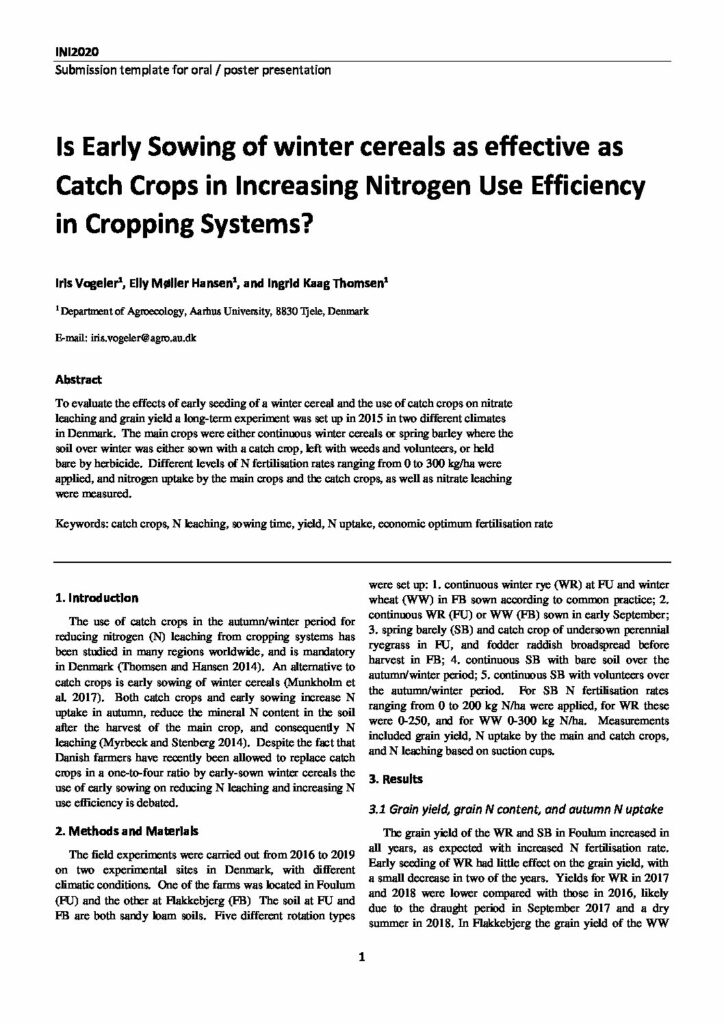Is Early Sowing of winter cereals as effective as Catch Crops in Increasing Nitrogen Use Efficiency in Cropping Systems?

To evaluate the effects of early seeding of a winter cereal and the use of catch crops on nitrate leaching and grain yield a long-term experiment was set up in 2015 in two different climates in Denmark. The main crops were either continuous winter cereals or spring barley where the soil over winter was either sown with a catch crop, left with weeds and volunteers, or held bare by herbicide. Different levels of N fertilisation rates ranging from 0 to 300 kg/ha were applied, and nitrogen uptake by the main crops and the catch crops, as well as nitrate leaching were measured.
The use of catch crops in the autumn/winter period for reducing nitrogen (N) leaching from cropping systems has been studied in many regions worldwide, and is mandatory in Denmark (Thomsen and Hansen 2014). An alternative to catch crops is early sowing of winter cereals (Munkholm et al. 2017). Both catch crops and early sowing increase N uptake in autumn, reduce the mineral N content in the soil after the harvest of the main crop, and consequently N leaching (Myrbeck and Stenberg 2014). Despite the fact that Danish farmers have recently been allowed to replace catch crops in a one-to-four ratio by early-sown winter cereals the use of early sowing on reducing N leaching and increasing N use efficiency is debated.
